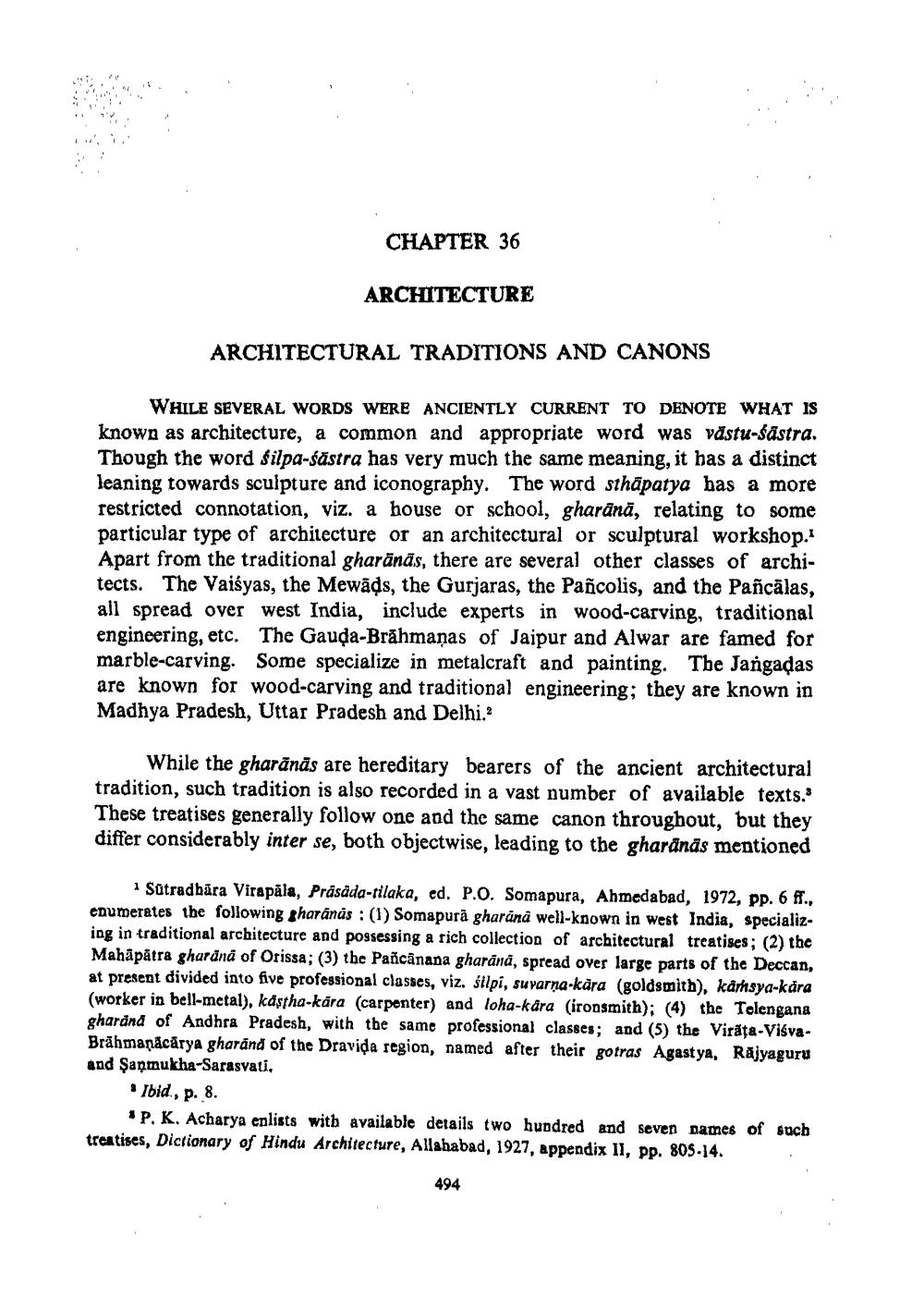________________
CHAPTER 36
ARCHITECTURE
ARCHITECTURAL TRADITIONS AND CANONS
WHILE SEVERAL WORDS WERE ANCIENTLY CURRENT TO DENOTE WHAT IS known as architecture, a common and appropriate word was vastu-sästra. Though the word filpa-śästra has very much the same meaning, it has a distinct leaning towards sculpture and iconography. The word sthāpatya has a more restricted connotation, viz. a house or school, gharānā, relating to some particular type of architecture or an architectural or sculptural workshop. Apart from the traditional gharānās, there are several other classes of architects. The Vaiśyas, the Mewāds, the Gurjaras, the Pañcolis, and the Pañcālas, all spread over west India, include experts in wood-carving, traditional engineering, etc. The Gauda-Brāhmaṇas of Jaipur and Alwar are famed for marble-carving. Some specialize in metalcraft and painting. The Jangadas are known for wood-carving and traditional engineering; they are known in Madhya Pradesh, Uttar Pradesh and Delhi.?
While the gharānās are hereditary bearers of the ancient architectural tradition, such tradition is also recorded in a vast number of available texts. These treatises generally follow one and the same canon throughout, but they differ considerably inter se, both objectwise, leading to the gharānas mentioned
Satradbāra Virapāla, Präsåda-tilaka, ed. P.O. Somapura, Ahmedabad, 1972, pp. 6 ff., enumerates the following sharänås : (1) Somapurā gharānå well-known in West India, specializing in traditional architecture and possessing a rich collection of architectural treatises; (2) the Mahapatra gharana of Orissa; (3) the Pancānana gharana, spread over large parts of the Deccan, at present divided into five professional classes, viz. silpi, suvarna-kara (goldsmith), kårhsya-kara (worker in bell-metal), kastha-kära (carpenter) and loha-kära (ironsmith); (4) the Telengana gharänd of Andhra Pradesh, with the same professional classes; and (5) the Virăța-ViśvaBrāhmaṇācārya gharánd of the Dravida region, named after their gotras Agastya, Rajyaguru and Şanmukha-Sarasvati,
Ibid., p. 8.
*P. K. Acharya enlists with available details two hundred and seven names of such treatises, Dictionary of Hindu Architecture, Allahabad, 1927, appendix II, pp. 805.14.
h the enter and supi, opread o vechitectu
494




